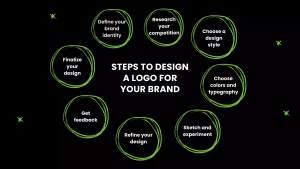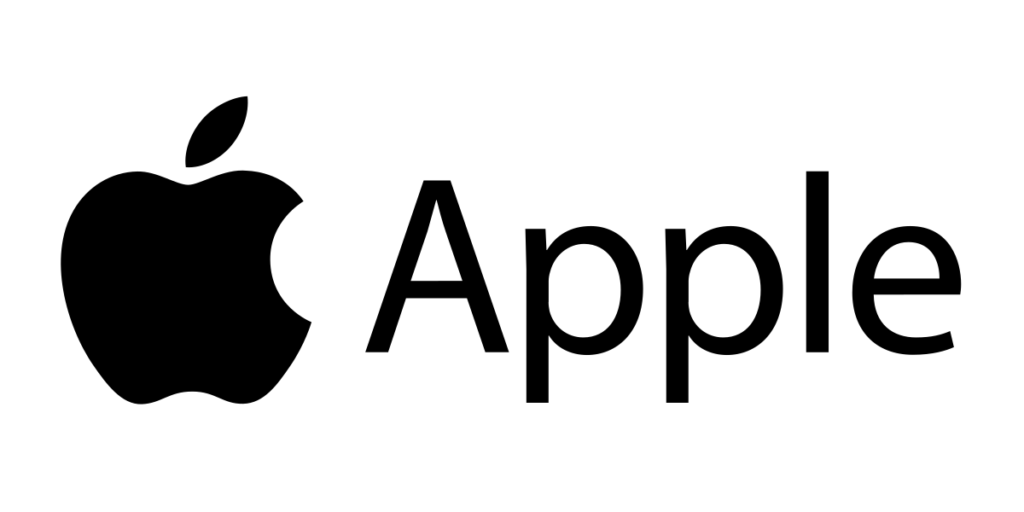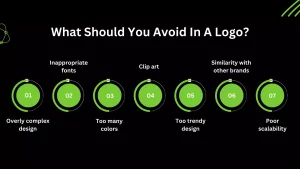How to Design a Logo for Your Brand?
If you are a brand owner, one question you must have in mind, and that is “How to design a brand logo that could outshine your brand?”.
A brand logo combines words with graphic elements for two distinct functions. It provides the firm name to the public and produces a visual representation of your company.
Some logos have strong symbolic associations with memories in people.
- According to a survey by DesignRush, 67% of small businesses believe a logo is essential for their brand identity.
- Users can recognize a well-designed logo in as little as 400 milliseconds- Nielsen Norman Group
- Brand Directory states that 94% of the world’s most valuable brands have a recognisable brand logo.
What is a Logo?
A logo is a visual symbol or insignia employed by individuals, businesses, organizations, and various entities to identify themselves and their products or services. Logos typically incorporate text and graphic elements to be easily distinguishable and memorable.
Logos manifest in diverse forms, encompassing abstract shapes, artistic representations, or typographic compositions. They are frequently employed on websites, business cards, letterheads, and other promotional materials to aid in the establishment of brand identity and facilitate recognition.

A well-crafted logo plays a vital role in conveying a company’s values, mission, and character and is often indispensable for nurturing a robust and enduring brand.
How to Come up with Logo Design Ideas?

Now in this article we will try to understand the logo design process that you should consider for your business. Basic thing in logo design process is coming up with logo designing ideas
It can be a creative and challenging process. Here are some tips to help you generate logo design ideas:
- Understand the brand:
Know every brand in inches. Logo designing is a reflection of what values you want to reflect of a brand. Creating a logo is influenced by company’s values, target audience, and unique selling proposition. Minimalist design for your logo could influence your target audience with great impact.
- Research the competition:
See the trends in the industry and know what your competitors are following. This can help you analyze the market practices and then you can improve your logo. Look at what other businesses in the same industry or market are doing with their logos.
- Brainstorm:
Initiate the process by generating ideas and terms linked to the brand. Consider the company’s offerings, mission, and what distinguishes it from rivals. This exercise can aid in creating a roster of possible minimalist design concepts.
- Sketch and Experiment:
Experiment with different shapes, colors, and typography and then create a final sketch.Try with different styles and design elements until you find a few concepts that could work.
- Get Feedback:
Get feedback from the audience as it will help you identify which designs are most effective and what changes you can make to improve them.
- Refine and Iterate:
Keep refining the logo and make the edits until you make a final logo for your brand. Make sure that it is memorable, unique and effective.
Steps to Design a Logo for Your Brand

Here are the steps to design a logo for your brand:
- Define your brand identity: Before designing a logo, it’s essential to define it. This includes your brand’s mission, values, target audience, and personality. These elements will guide the design process and ensure that your logo accurately represents your brand.
- Research your competition: Look at other businesses in your industry and analyze their logos. This can help you identify what’s already out there and what you can do differently to stand out.
- Choose a design style: Decide on the design style that best represents your brand. Some popular types include abstract logos, wordmarks, pictorial logos, and combination logos.
- Choose colors and typography: Choose a color palette that reflects your brand’s personality and values. Also, choose legible typography that fits your logo’s style.
- Sketch and experiment: Start sketching your ideas and experimenting with different design elements. This can include shapes, symbols, and typography. Play around with different combinations until you find a few concepts that could work.
- Refine your design: Refine your initial sketches until you have a few robust design options. This may involve tweaking the shapes, colors, and typography to make the design more effective.
- Get feedback: Show your designs to others and get feedback. This can help you identify which designs are most effective and what changes you can make to improve them.
- Finalize your design: Use your feedback to refine your designs further. Once you have a final design, test it across different mediums and sizes to ensure it is effective in all contexts.
Overall, designing a logo takes time and creativity. However, following these steps, you can create a logo that accurately represents your brand and effectively communicates its values to the target audience.
Brand Story for Designing a Logo

Source: Graphic Springs
The Apple logo is one of the world’s most iconic emblems, boasting a captivating history. In 1977, the logo’s inception was credited to Rob Janoff, who, at the time, served as a graphic designer for Regis McKenna Advertising. Steve Jobs, the co-founder of Apple, sought an uncomplicated, sleek, and contemporary logo.
To fulfil this vision, Janoff chose an apple as the company’s symbol for its simplicity and universal recognition. He then introduced a bite mark into the apple’s design, imbuing it with character and ensuring it was unmistakably an apple, not a cherry.
Including the bite mark was also a strategic choice to enhance the logo’s distinctiveness and ease of recognition, particularly when scaled down, as on the side of a computer. The original Apple logo’s rainbow stripes symbolised the company’s emphasis on innovation and creativity.
In 1998, Apple decided to revamp its logo, embracing a more minimalist approach that remains in use today. The updated stamp showcases a monochromatic apple with a polished finish and a bite mark on the right side. This distinctive design mirrors the company’s shift towards simplicity and refinement in its product offerings.
What Should You Avoid In A Logo?

When designing a logo, it’s essential to avoid certain things to ensure that the logo is effective and represents your brand accurately. Here are some things to avoid in a logo:
- Overly complex design: Avoid designing a tough logo with too many design elements. This can make the logo difficult to recognize and remember.
- Inappropriate fonts: Avoid using wrong fonts that are difficult to read or don’t fit with the style of the logo.
- Too many colors: Avoid using too many colors in the logo. This can make the logo difficult to reproduce and may look unprofessional.
- Clip art: Avoid using clip art or pre-made designs in your logo. This can make your logo look generic and unoriginal.
- Too trendy design: Avoid following design trends too closely. Trends come and go, and a trendy logo can quickly become outdated.
- Similarity with other brands: Avoid creating a logo that is too similar to other brands in your industry. This can cause confusion and dilute your brand’s identity.
- Poor scalability: Avoid designing a logo that doesn’t scale well. The logo should look good in all sizes, from a small business card to a giant billboard.
It’s essential to design a logo that is simple, timeless, and accurately represents your brand. By avoiding these common mistakes, you can create a compelling logo that stands out in the marketplace.
Also Read : Brand Positioning: Complete Guide for 2023
Final Word
Creating a logo is essential in forging a robust and easily identifiable brand. A thoughtfully crafted logo can convey your brand’s core principles, character, and objectives while facilitating the establishment of an enduring rapport with your intended audience.
It’s imperative to invest the effort in comprehending your brand, analyzing competitors, and exploring diverse design elements, all to shape a logo that truthfully represents your brand and effectively conveys its principles.
It is essential to remain vigilant about common errors, including adopting excessively intricate designs, unsuitable font choices, excessive colours, reliance on clip art, and a lack of adaptability in different sizes. For more queries you can contact us.
FAQ’s
Can I design a logo myself?
Yes, you can design a logo yourself. If you have a good understanding of these concepts and access to design tools, you can create a logo that effectively represents your brand.
How do I know if my logo is good?
Here are some factors to consider when evaluating the effectiveness of your logo:
Simplicity: A good logo is simple and easy to recognize. It should be easily identifiable even when viewed at a small size or from a distance.
Memorable: A good logo is unique and sticks in people’s minds. It should leave a lasting impression and be easily recalled by people who see it.
Relevant: A good logo is relevant to the brand it represents. It should accurately represent the brand’s identity, values, and personality.
Versatile: A good logo is versatile and can be used in various contexts, including online, print, and promotional materials. It should look good in color and black and white and be easily recognizable across different mediums.
Timeless: A good logo is timeless and doesn’t become outdated quickly. It should have a minimalist design that can stand the test of time.
Unique: A good logo is unique and stands out from other logos in the industry. It should be easily distinguishable and avoid any similarities with different logos.
Consistency: An effective logo maintains uniformity and is consistently applied across all branding materials. It should always be employed, featuring the same colour schemes and typography, to primarily cultivate brand recognition and enhance awareness.
What should I choose for my business, Graphic design logo maker or professional logo designing company?
- Go for a graphic design logo maker if: You have a tight budget, need a logo quickly, and have a clear design concept in mind.
- Choose a professional logo designing company if: You value a unique and strategic logo that reflects your brand, and are willing to invest time and money for expertise.
Also Read – 21 Brand Style Guide Examples for Visual Inspiration



